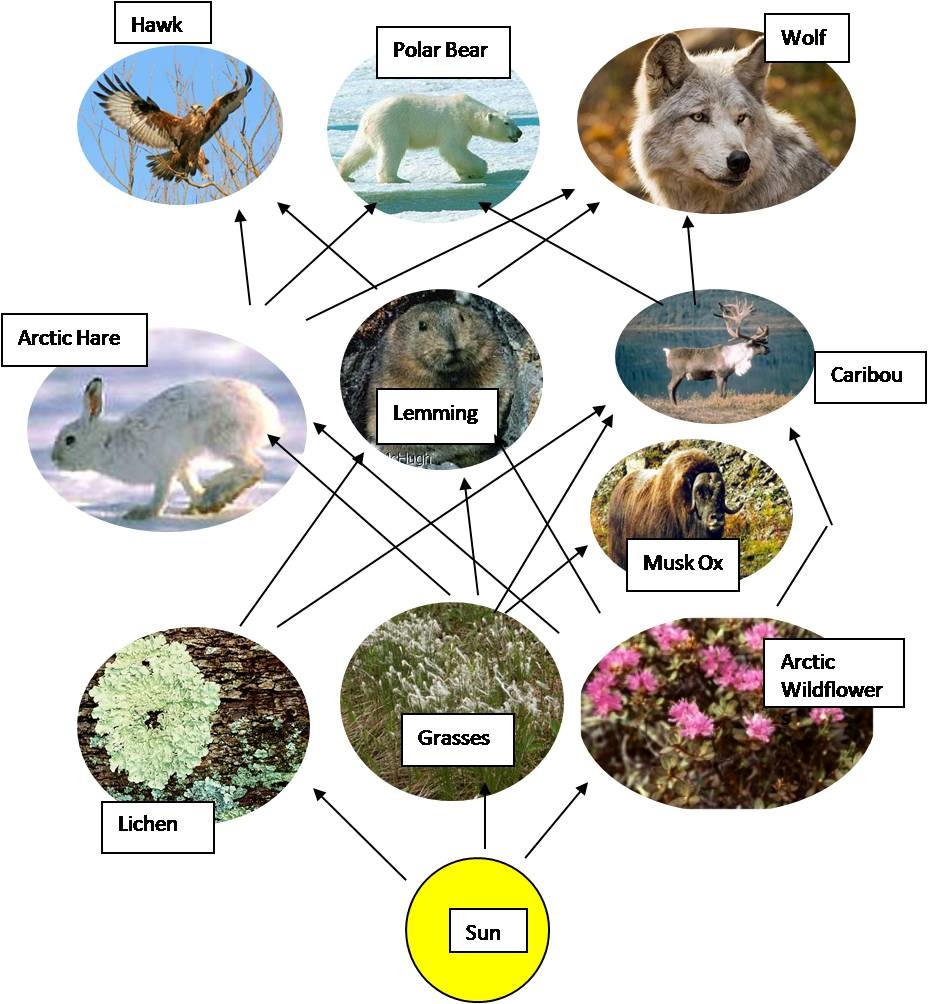The Biomes Biology Diagrams The Arctic tundra has extremely cold winter temperatures and short winter days. birch, and willow, which grow in a thin layer of soil atop permanently frozen soils, form the base of the food chain. Lichens are also abundant on the tundra. The plants and lichens are eaten by caribou, pika, moose, and grizzly bears. Grizzly bears also eat the In turn, the top of the food chain would also starve. Lower-Middle of the Arctic Tundra Food Chain. The lower-middle Arctic food chain consists of moose, caribou, reindeer, Arctic tern, and other birds, dalls sheep, muskox, snowshoe hare, lemmings, beavers, squirrels, voles, shrews, wood frogs, white fish, salmon, and other fish.

Moose, towering over the landscape, browse on willow trees and aquatic plants. The tiny snowshoe hare, with its white winter coat, hops through the undergrowth, nibbling on grasses and lichens. Predators: Guardians of the Tundra's Balance. Predators, the apex of the Arctic food chain, keep the herbivore populations in check. A tundra food chain shows the flow of energy in the tundra ecosystem, starting from producers to the top-level consumers and, finally, the decomposers. The tundra biome is the coldest among all biomes on Earth. They are distributed in North America, Europe, Asia, and coastal Antarctica. The tundra is a frozen desert; thus, the diversity of

The Moose's Role in Ecosystems: Why They Matter Biology Diagrams
2. What food chains are in the tundra? Resident animals have to change what they are hunting and eating as the seasons change. The food chain in the Arctic Tundra consists of predators such as owls, foxes, wolves, and polar bears at the top of the chain. Predators hunt herbivores, plant-eating animals, such as caribou, lemmings, and hares. 3

Since real ecosystems can be complex, the simple food chain analogy often falls apart. For example, bears are a top predator in the tundra, but they also feed on berries and fish. For this reason, a tundra biome food web is often more appropriate to describe the complex energy pathways that take place in real ecosystems. This takes the form The food web starts with the sun providing the energy for the plants (producers) such as fungi, Balsam Fir Trees, Fireweed, and Columbines. Then after this, the plants are eaten by the herbivores (primary consumers) such as Blue Jays, moose, and squirrels, which are then eaten by the carnivores (secondary consumers); owls, foxes, and weasels. Similarly, insects benefit from the decaying plant matter left behind by moose. The decomposition of this organic matter supports insect larvae and other small creatures, which in turn support the larger animals in the food chain. Moose also contribute to biodiversity by being a food source for scavengers.
